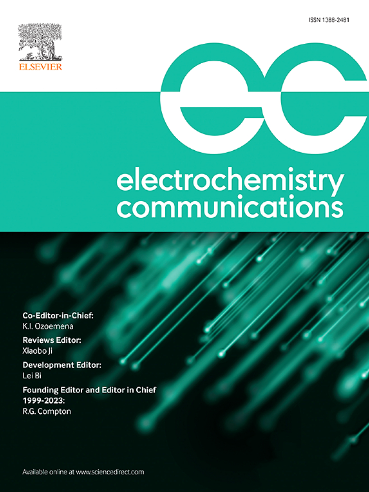Design of anti-poisoning catalysts for hydrogen oxidation reaction in next-generation anion exchange membrane fuel cells
IF 4.7
3区 工程技术
Q2 ELECTROCHEMISTRY
引用次数: 0
Abstract
Extensive research has been conducted on hydrocarbon-based ionomers and membranes with high ionic conductivity and chemical stability for next-generation anion exchange membrane fuel cells (AEMFCs). However, it is well known that the benzene groups of hydrocarbon-based ionomers seriously poison the active sites of Pt catalysts, thereby reducing hydrogen oxidation reaction (HOR) activity and AEMFC performance. Over the past years, the development of benzene-tolerant catalysts has mainly focused on metal alloy nanoparticles such as PtRu, without pursuing the design of breakthrough catalyst structures that can more effectively reduce benzene poisoning. Here, we introduce an anti-poisoning catalyst structure promoted by the synergistic effect of carbon shell encapsulation and metal alloying. The porous carbon shell encapsulating the metal nanoparticles is expected to prevent direct adsorption of benzene groups, while the alloying of Pt and Ru can reduce the benzene adsorption energy itself. Comparative electrochemical analysis results confirm that the carbon shell-encapsulated metal alloy catalyst significantly alleviate benzene poisoning, exhibiting superior HOR activity than the conventional alloys in benzyltrimethylammonium hydroxide (BTMAOH) solution.

下一代阴离子交换膜燃料电池氢氧化反应抗中毒催化剂的设计
针对下一代阴离子交换膜燃料电池(aemfc),人们对具有高离子电导率和化学稳定性的烃基离聚体和膜进行了广泛的研究。然而,众所周知,烃基离聚物的苯基团严重毒害Pt催化剂的活性位点,从而降低氢氧化反应(HOR)活性和AEMFC性能。多年来,耐苯催化剂的开发主要集中在PtRu等金属合金纳米颗粒上,而没有追求能更有效减少苯中毒的突破性催化剂结构的设计。本文介绍了一种由碳壳封装和金属合金化协同作用促进的抗中毒催化剂结构。包裹金属纳米颗粒的多孔碳壳有望防止苯基的直接吸附,而铂和钌的合金化可以降低苯的吸附能。对比电化学分析结果证实,碳壳包封金属合金催化剂在苯三甲基氢氧化铵(BTMAOH)溶液中表现出比传统合金更高的HOR活性,显著减轻了苯中毒。
本文章由计算机程序翻译,如有差异,请以英文原文为准。
求助全文
约1分钟内获得全文
求助全文
来源期刊

Electrochemistry Communications
工程技术-电化学
CiteScore
8.50
自引率
3.70%
发文量
160
审稿时长
1.2 months
期刊介绍:
Electrochemistry Communications is an open access journal providing fast dissemination of short communications, full communications and mini reviews covering the whole field of electrochemistry which merit urgent publication. Short communications are limited to a maximum of 20,000 characters (including spaces) while full communications and mini reviews are limited to 25,000 characters (including spaces). Supplementary information is permitted for full communications and mini reviews but not for short communications. We aim to be the fastest journal in electrochemistry for these types of papers.
 求助内容:
求助内容: 应助结果提醒方式:
应助结果提醒方式:


